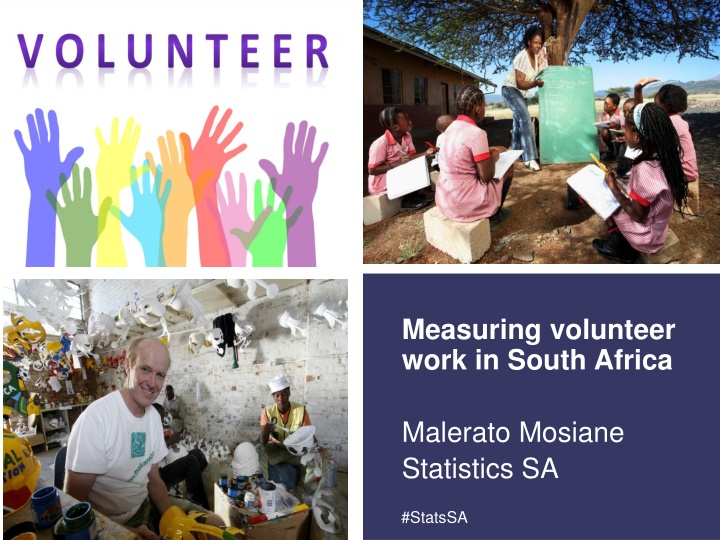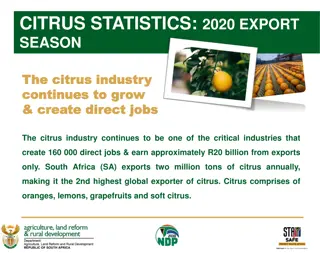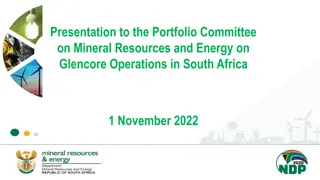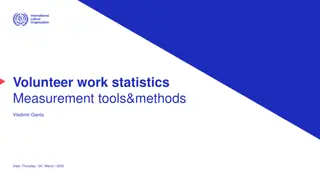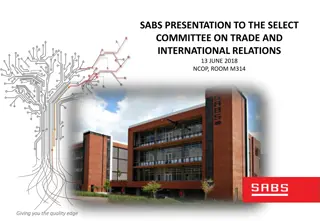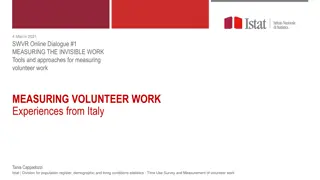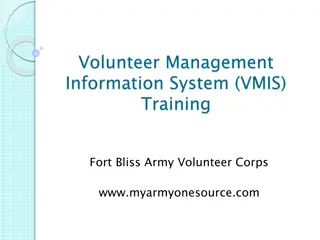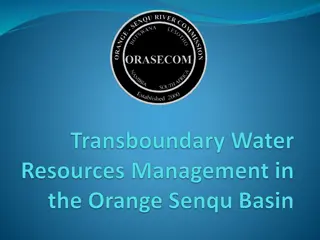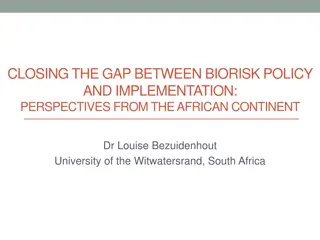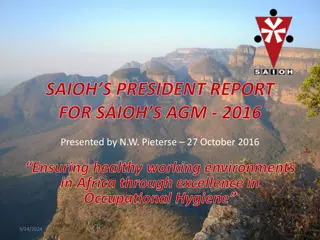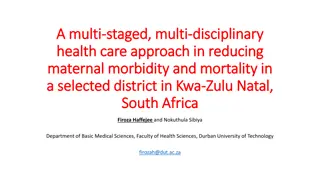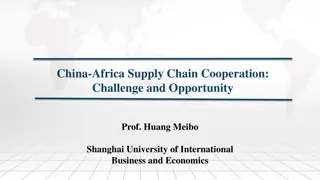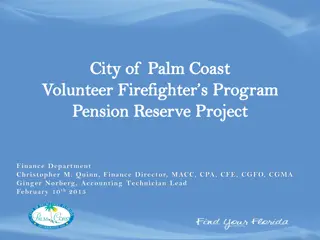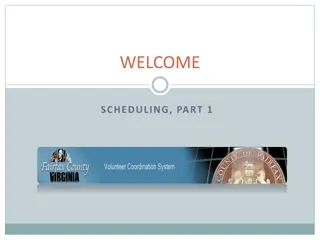Measuring Volunteer Work in South Africa - Overview of VAS
The Volunteer Activities Survey (VAS) in South Africa collects data on volunteer activities to estimate economic value, identify types of volunteering, and provide insights into challenges with data collection.
Download Presentation

Please find below an Image/Link to download the presentation.
The content on the website is provided AS IS for your information and personal use only. It may not be sold, licensed, or shared on other websites without obtaining consent from the author.If you encounter any issues during the download, it is possible that the publisher has removed the file from their server.
You are allowed to download the files provided on this website for personal or commercial use, subject to the condition that they are used lawfully. All files are the property of their respective owners.
The content on the website is provided AS IS for your information and personal use only. It may not be sold, licensed, or shared on other websites without obtaining consent from the author.
E N D
Presentation Transcript
Measuring volunteer work in South Africa Malerato Mosiane Statistics SA #StatsSA
Background The SA QLFS does not capture volunteer work. A special survey (Volunteer Activities Survey (VAS)) is designed to collect such information. Objectives of VAS are to: collect data about people who are involved in volunteer activities. identify organisation-based and direct volunteering. give a profile of those engaged in volunteer activities. estimate the economic value of volunteer work.
Background VAS is a household-based survey that collects data on the volunteer activities of individuals aged 15 years or older. A sub-sample of QLFS two-phase survey 1st phase - Volunteers identified through QLFS Individuals are asked whether they were involved in any volunteer activities in the 4 weeks prior to the interview. 2nd phase - individuals eligible for VAS are then followed up to conduct detailed interviews about their volunteer activities during the reference period.
Background Individuals are asked to indicate all volunteer activities they were involved in the four weeks prior the interview. Details are collected for the 3 main activities only in the past four weeks. Main volunteer activity is regarded as the one on which the respondent spent the most time. Volunteer activities for the past 12 months also collected Conducted in 2010, 2014 and 2018 (PAPI) Next survey in 2022 (CAPI/CATI/CAWI)
Challenges with data collection Data is collected by the QLFS fieldworkers, so they may not indicate all the volunteers to reduce work for themselves it would have been ideal to have a separate team collecting data on volunteer work A lot of probing has to be done because most people don t regard the activities that they do for others as volunteering Volunteering may be under-estimated as a result of the above
Why measure volunteer work regularly? Forms of work and the SNA 2008 Intended destination of production for own final use for use by others Employment (work for pay or profit) QLFS Unpaid trainee work QLFS Other work activities ? Volunteer Work VAS, TUS Own-use production work in Forms of work in households producing market and non market units of of goods QLFS services TUS goods services Relation with 2008 SNA Data collected through these survey to provide a comprehensive picture of all forms of work undertaken in the SA economy Activities within the SNA production boundary Activities inside the SNA General production boundary
Definition Unpaid non-compulsory work done for others; i.e. time individuals give without pay to activities performed either through an organization or directly for others outside their own household.
Data items collected Type of activities volunteers engage in Number of hours volunteered Type of work performed (Occupation) Institutional setting of volunteer work Organisation-based (NGO, Government, etc) Direct Field of work (Industry)
Key indicators Number of volunteers Volunteer rate Hours volunteered Value of volunteering
Valuing volunteer work One of the objectives of the survey is to estimate the economic value of volunteer work There are two general approaches available to measure the monetary value of volunteer and other unpaid work: a) Opportunity cost method b) Replacement cost method
Opportunity cost method This method estimates the value by assigning to the hours of volunteer work the average wage that the volunteer would earn if that volunteer worked at his or her regular job for those same hours. E.g. - a medical doctor volunteering as a teacher assisting in basic adult education programme in his community - his work will be valued at the rate he or she gets as a Doctor not as a teacher.
Replacement cost method This method estimates the value by assigning to hours of volunteer work what it would have cost to hire someone for pay to do the work that the volunteer is doing for no pay. E.g. - a medical Doctor volunteering as a teacher - his work will be valued at the rate of what a teacher gets paid. This is the method recommended by ILO and it is adopted in South Africa
Computing value of volunteer work Median hourly earnings by occupation (from QLFS) was used to assign value to the hours a volunteer worked in a particular occupation. The median hourly earnings were multiplied by the total hours volunteered to get the value for the reference period (four weeks prior the interview) This value is converted to an annual value for the 12 month reference period.
Some indicators, 2018 Indicator Men Women 1,0 Million 1,7 Million Number of volunteers 5,1% 8,1% Volunteer rate 243,8 Million 395,9 Million Hours volunteered R5,9 Billion R7,3 Billion Value of volunteering (ZAR) Source: Statistics South Africa, Volunteer Activities Survey, 2018 Of the 2,7 million volunteers, 61,9% were women
Dissemination Media briefings Reports published on the website http://www.statssa.gov.za/publications/P02113/P021132014.pdf Micro data and metadata available on the website free of charge http://nesstar.statssa.gov.za:8282/webview/
Future innovations A need to have a central database where volunteers can register Collect basic information from them as the register sign on questionnaire Indicate the activities that are available for people to volunteer in Have a portal where volunteers can capture the activities they were involved in and time they spent volunteering on a daily basis Have a volunteer work barometer to monitor some key indicators based on the data on the database This is possible for Organisation based volunteering
